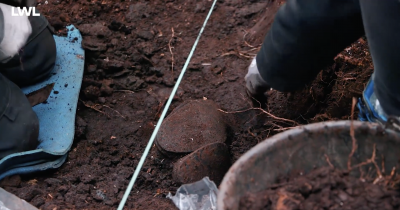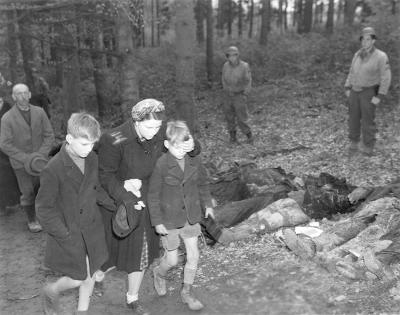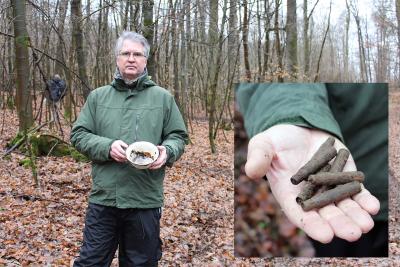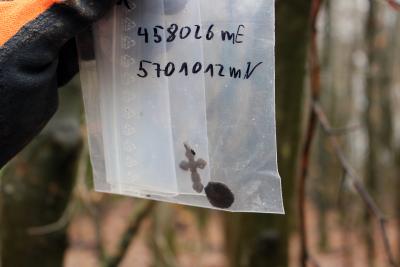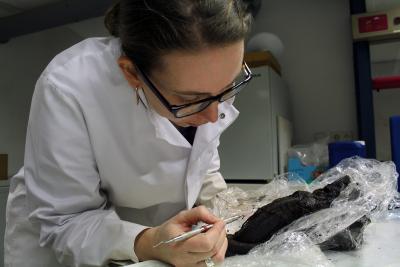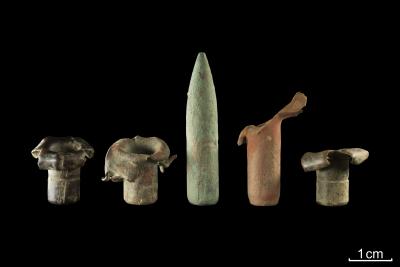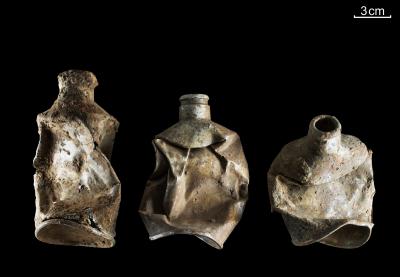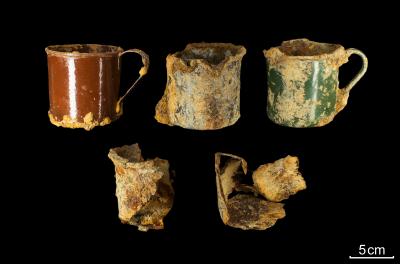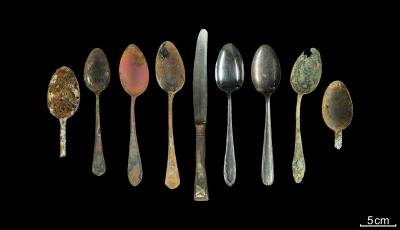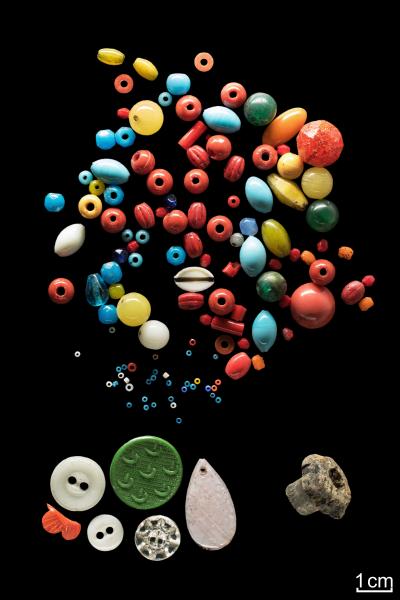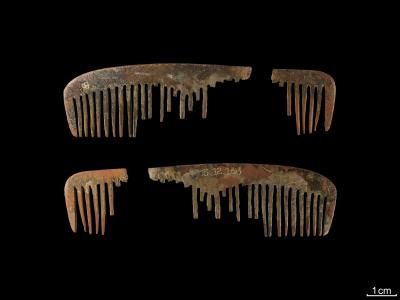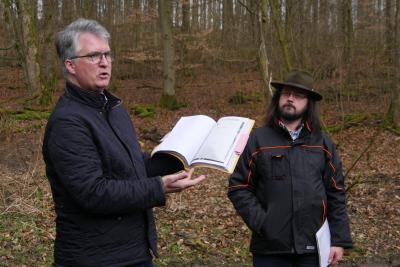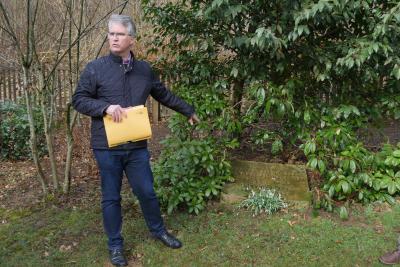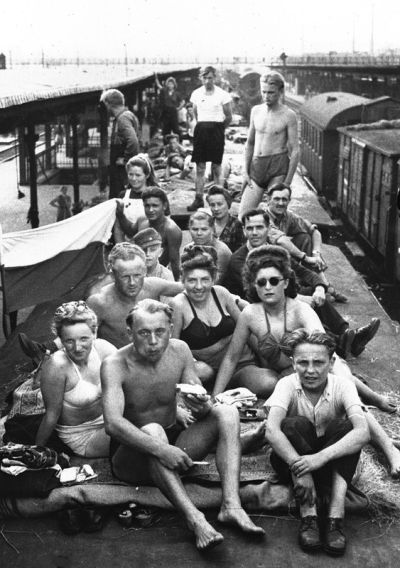The Massacre in the Arnsberg Forest: Nazi crimes perpetrated on Russian and Polish forced labourers in 1945
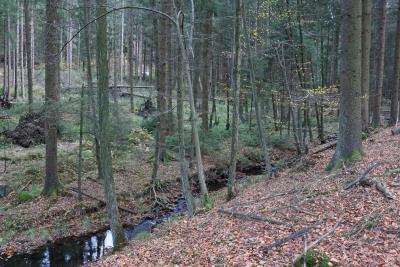
In spring 1945, shortly before the end of the Second World War, after taking the Ludendorff Bridge near Remagen and crossing the Rhine near Wesel, the Allied troops began to occupy the strategically important Ruhr area in a pincer-like manner. In view of the preceding massive Allied air raids and the precarious situation with regard to supplies, the already inadequate living conditions of foreign forced labourers in the Ruhr area had once more deteriorated dramatically. As a result thousands of them tried to make their way east from the war-torn areas on foot. Although orders had been given to regulate the evacuations and repatriations, the situation became increasingly chaotic. Particularly in the north of the Sauerland region, the treks piled up to such an extent that accommodation had to be made available. Alone in the Sauerlandhalle in Warstein 800 to 1,000 foreign forced labourers were arriving every day in March 1945. Inadequate security and poor supplies led to various sized groups of forced labourers splitting off from the marching columns in order to organise their own survival and advancement independently. Hence they fought their way through the surrounding forests in an “uncontrolled” fashion away from the planned return routes.
Although there had been no serious incidents of robbery or acts of violence in the Warstein area, the clearly chaotic circumstances caused SS-Obergruppenführer and General of the Waffen-SS Hans Kammler – he was the commander of the Wehrmacht and Waffen-SS “Division zur Vergeltung” (Division for Retribution) – to issue an order to kill them. According to later testimonies, he believed that the large number of returning forced labourers posed a threat, not only to the military defence but also to the supply chain and the security of the German civilian population. Hence, on March 20th 1945, “under the utmost secrecy”, Kammler gave the order to “drastically decimate the number of foreign workers”, and to do so “regardless of their gender”. Within the next three days, until 23rd March 1945, a total of 208 Russian and Polish forced labourers – men, women and children – were to die as a result of this arbitrary procedure.
The SS and Wehrmacht officers in the Division Staff independently took over the responsibility for implementing the execution order. Under the pretext of requiring manpower, the firing squad, under the command of the SS-Oberfeldrichter Wolfgang Wetzling, took 71 people – 14 men, 56 women and a tiny child – in batches from the Warstein Schützenhalle to the Langenbach valley, where they were shot and buried on the spot. On the following morning 80 persons were picked up under the command of Wehrmacht Lieutenant Helmut Gaedt, and taken in groups of 15-20 to an execution site near Eversberg, where they were shot. A third outrage occurred at Suttrop, where 35 men and 21 women who had been accommodated in the local school, ( i.e. in the immediate vicinity of the division staff), were taken to a forest marking entitled “Im Stein” and shot in the neck . The Germans shrank back from to shooting an infant who was still alive in the excavated pit, whereupon SS-Rottenführer Anton Boos probably crushed the child's skull against a tree. The exact time of the shooting as well as the name of the commander of the third firing squad are still unclear. It is also still unclear whether, on the night of 22/23rd March, a detail from the division was also responsible for setting fire to the Sauerlandhalle, containing about 1,000 people, as a clear signal of annihilation. The Eastern European forced labourers who were trapped in the burning hall were fortunately freed by French prisoners of war.
Shortly after US troops occupied Warstein at the end of April 1945, a tip from the militia revealed the truth about two of these three brutal massacres. The third, the Eversberg massacre, only came to light at the end of 1946. In the Langenbach valley and Suttrop the US soldiers ordered former NSDAP party members to exhume the murdered victims and forced the inhabitants of the surrounding villages to march past the corpses. This shock form of “re-education” was practised by the Allies as a form of 'denazification through confrontation with Nazi crimes' shortly after the end of the war. But whether it really triggered a rethink or rather a defensive reaction, is a matter of controversy. That said, in the socio-political climate of the Adenauer period the reactions of the local population to the massacres were predominantly defensive. They were marked by denial, stylising their own role as victims, a “put-it-behind-us-once-and-for-all” mentality and by insisting that these events had nothing to do with the civil population. Such attitudes were also reflected in the broad protest against the erection of an “Atonement Cross” in 1947 after the third mass grave in Meschede became known. Shortly after, following heated debates about guilt and responsibility and repeated damage to the cross, it was buried. It was only publicly exhibited once again in the Maria-Himmelfahrt church in Meschede in 1981.
Both the efforts of “re-education” measures and the clashes and protests against the “Cross of Atonement” were regionally limited. The trial against the perpetrators, which began in 1957, was not only covered by the regional media, but also nationwide. Hans Kammler, the man mainly responsible, was now beyond reach as he was said to have committed suicide at the end of the war. In the first instance the verdict on the remaining six defendants was scandalously mild, thereby revealing the striking disproportion between crime and punishment that still prevailed at the time. It was only after a legal appeal that the sentences were significantly increased by a jury court in Hagen.
In 1964 the bodies of the murdered forced labourers from Suttrop and Warstein – with the exception of seven bodies that could no longer be found in Suttrop – were transferred to the “Fulmecke” forest cemetery in Meschede. Here, as in 1947, several corpses could be identified on the basis of their papers. Nonetheless, regardless of the legal regulations they were buried at the new grave site anonymously. Misleading inscriptions on the memorial stones also concealed any references to the murders. Thus the victims of the massacre in the Arnsberg Forest gradually fell into oblivion.
Now, more than 70 years after the appalling deeds, the memory of the victims and the confrontations with the NS crimes have been revived. After several years of historical research by Dr. Marcus Weidner, archaeological excavations were carried out in 2018 and 2019 by the “LWL (Landschaftsverband Westfalen-Lippe) Archaeology for Westphalia” in cooperation with the LWL-Institute for Westphalian Regional History, at specific locations in the Arnsberg Forest. The archaeological excavations were designed to help reconstruct the exact circumstances of the crimes and shed further light on the National Socialist crimes in the Arnsberg Forest. The latest finds – including projectiles and ammunition, but also everyday objects like a prayer book and a dictionary in Polish, shoes and parts of clothing, colourful buttons and pearls, crockery and cutlery – not only bear witness to the final hours of the murdered victims, but also provide information about the course of these horrific events. So far only a few names of the murder victims from March 1945 are known. Within the framework of the ongoing research in Germany and abroad it has been possible to find 14 names to date and to give the anonymously buried victims an identity. This work offers us the opportunity to contact their descendants and keep alive the memory of the “long forgotten group of victims” amongst foreign forced labourers.
Marcus Weidner/Katarzyna Salski, June 2019
Further reading:
Marcus Weidner: Kriegsendphaseverbrechen an Zwangsarbeitern im Sauerland 1945, in: 200 Jahre Westfalen. Jetzt!, Münster 2015, pp. 342-347.
Matthias Frese, Marcus Weidner: Verhandelte Erinnerungen. Der Umgang mit Ehrungen, Denkmälern und Gedenkorten nach 1945, Paderborn 2017.
A film on Germans marching past the rows of corpses, alongside further photos and documents can be found in the Internet portal “Westfälische Geschichte”, https://www.westfaelische-geschichte.de/web1048
press articles:
Naziverbrechen: Das Massaker im Arnsberger Wald. Erschienen am Mittwoch, 20.03.2019 in SPIEGEL ONLINE: https://www.spiegel.de/einestages/massaker-im-arnsberger-wald-nazi-verbrechen-im-sauerland-a-1258548.html
